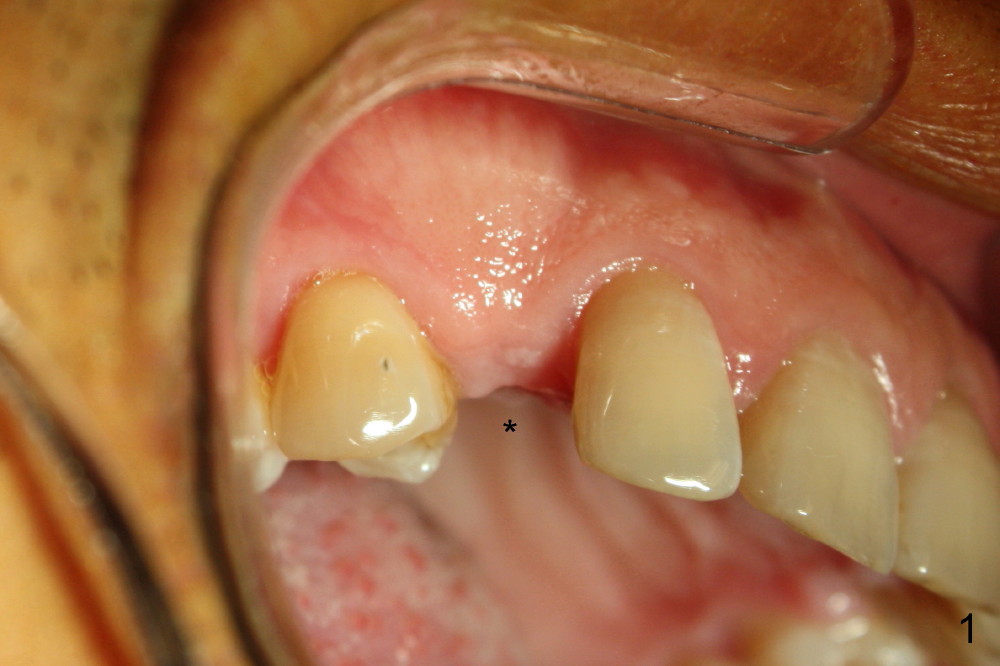
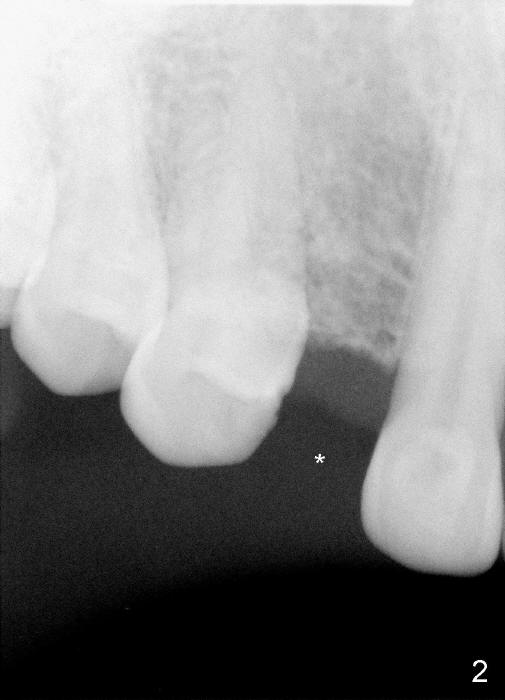
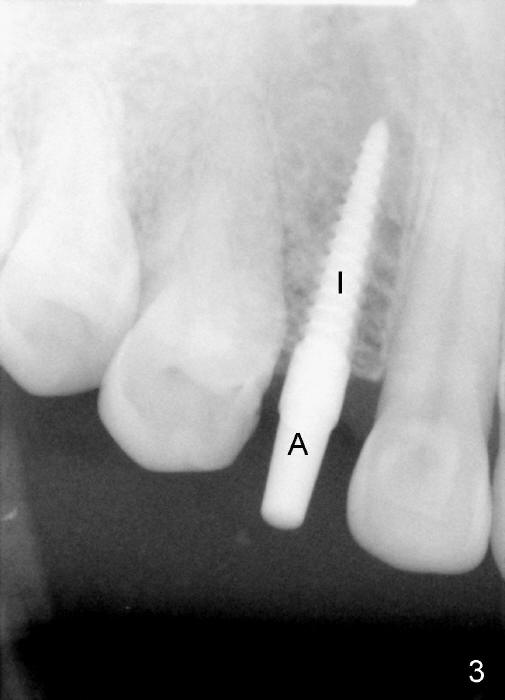
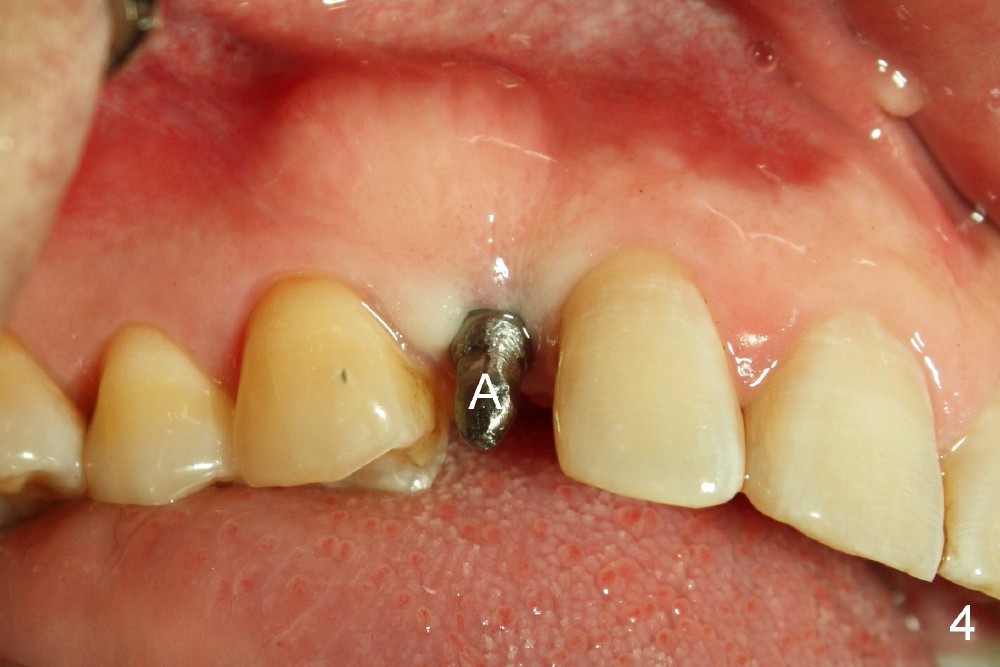
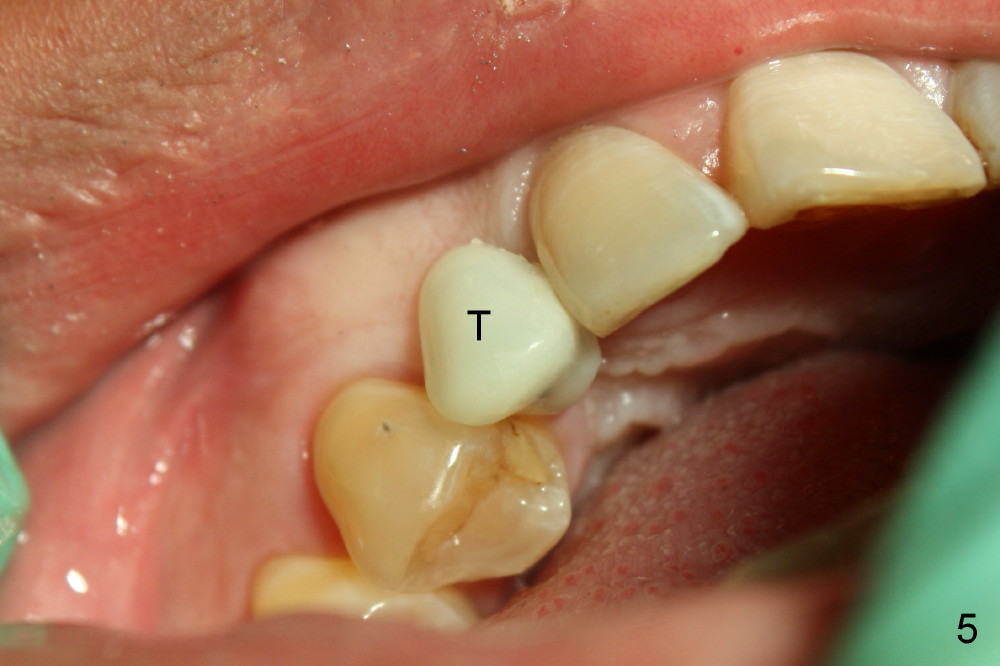
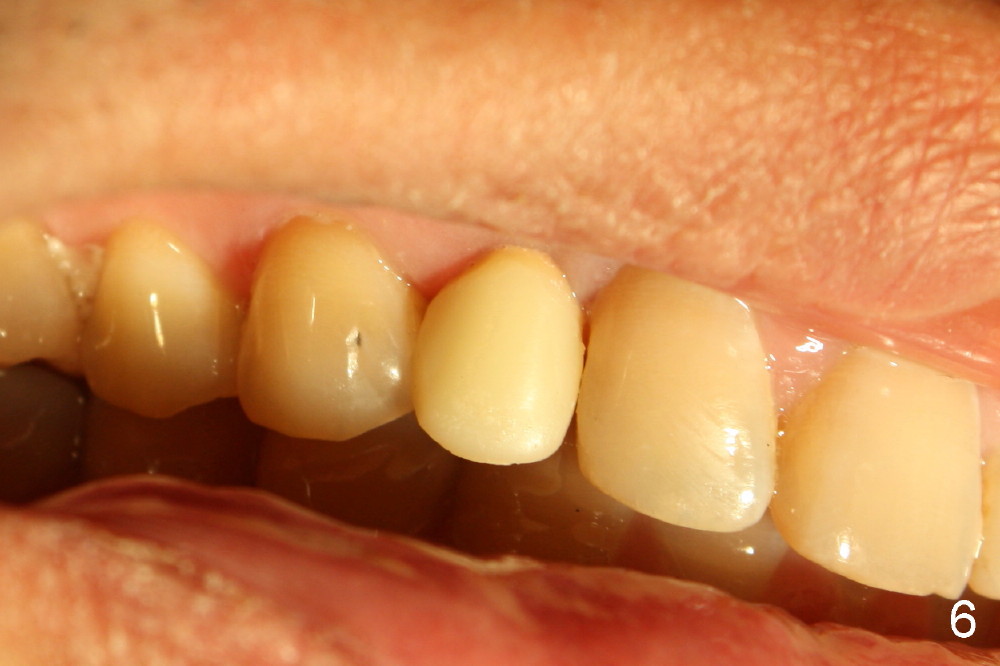
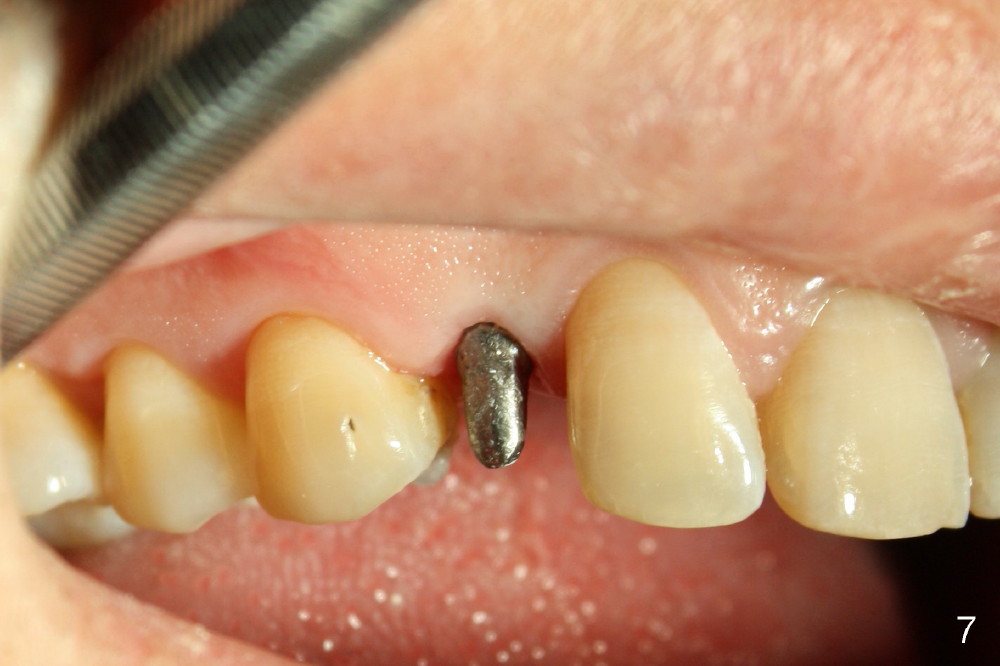
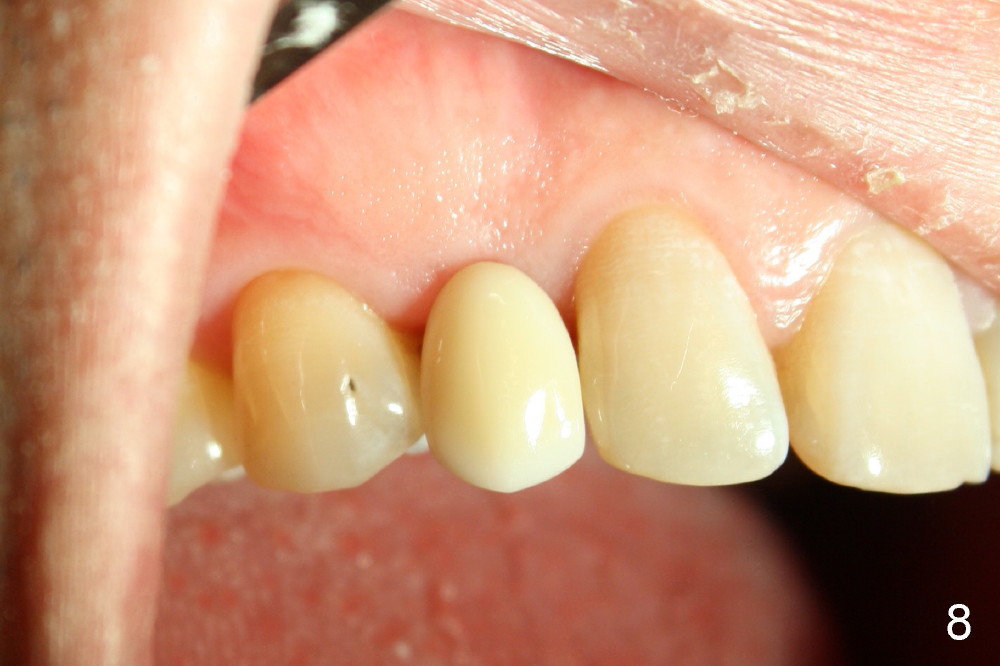
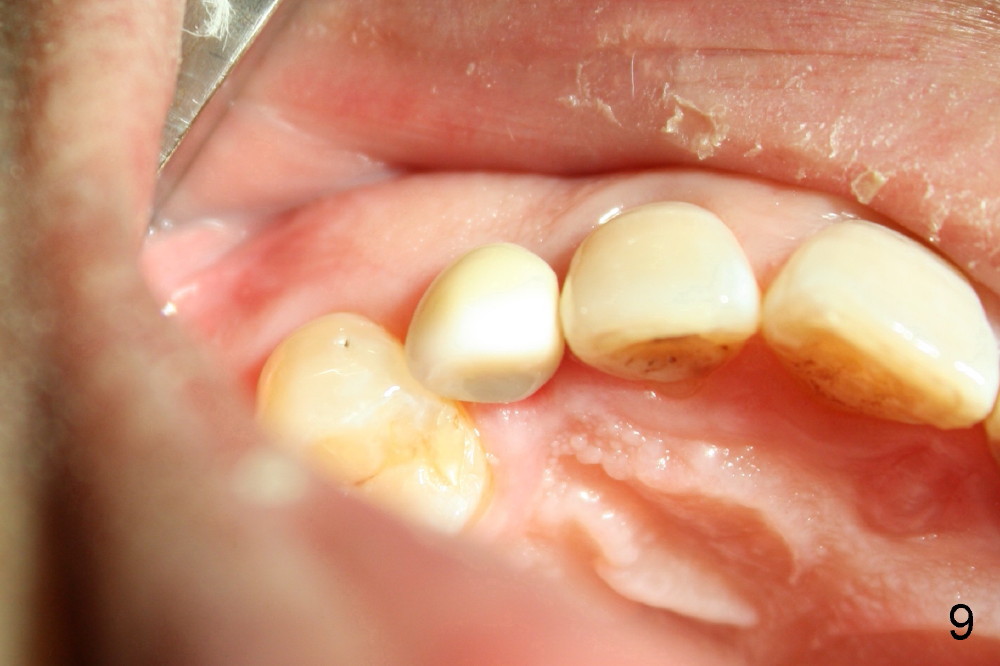
 |
 |
 |
 |
 |
|
 |
 |
|
 |
 |
|
Immediate Canine Tooth
Mr. Liu is in his forties. One of his top permanent canine teeth is missing (Fig.1,2 *). When the baby canine teeth fell, the space was fixed a temporary bridge (Maryland bridge). But it kept falling. Although he knows that the best option is implant, he has been concerned about pain associated with implant surgery. Finally he wants to give him a try for implant.
The space of the missing canine is pretty small (5 mm from right to left). We have to choose the smallest implant that can be permanently used (3 mm in diameter). Any implant smaller than 3 mm is generally regarded as a temporary one. When an implant is small, there is not enough space to hold the abutment. So manufacturers make so-called one piece implant. The implant and abutment are made as one unit. This type of the implant is placed for Mr. Liu (Fig.3 I/A).
Since the implant is small, the surgery is minimally invasive. There is not much bleeding when the one-piece implant is placed (Fig.4). The surrounding gums look healthy. The portion sticking out of the gums is the abutment (A), which has been just prepared to hold an immediate temporary crown (Fig.5 T).
Before he leaves, Mr. Liu says that air does not come out through the space anymore when he talks. When numbness wears out, he does not feel any pain. One week later, the gums around the implant look great (Fig.6). It is difficult to fathom how pleased he is. Most of us at least at one point of time have a complete dentition. We do not realize how valuable each one of our teeth is. What should we do now while our teeth are not so bad? Pick up toothbrush and floss!
Five months after implant placement, Mr. Liu returns for permanent crown cementation. When the temporary crown is removed, the gums around the implant look healthy (Fig.7). The new crown is stable and looks harmonious with the surrounding tissue (Fig.8,9). He is pleased. His son has the same condition: in fact, two missing canines. Two implants are going to be placed when he is 18 years old.
Xin Wei, DDS, PhD, MS 1st edition 09/20/2013, last revision 02/28/2014